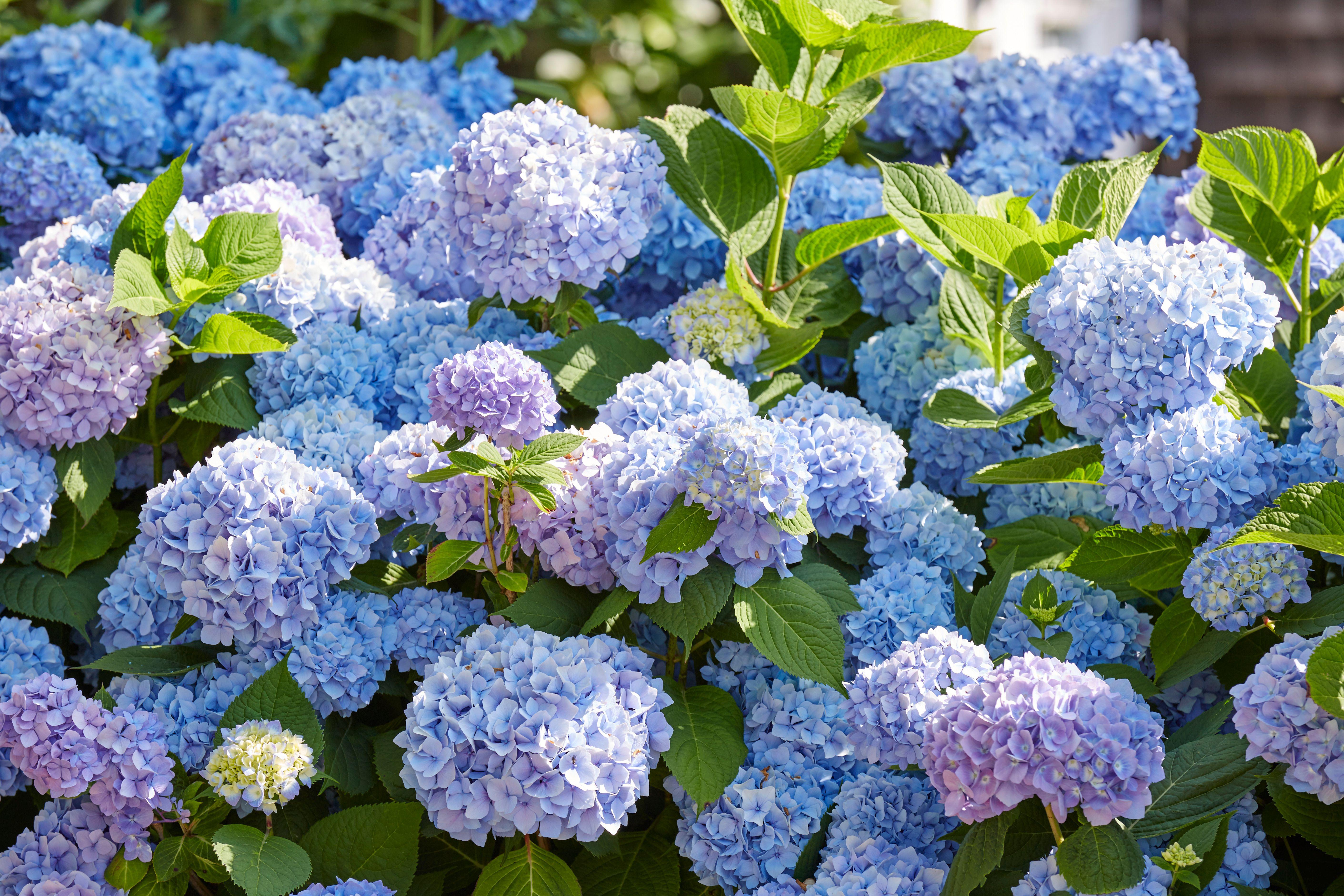Fall is often when people start cutting back their gardens for the colder months. But if you cut back your hydrangeas at the wrong time of year, you'll end up with no flowers the following year. Here’s the tricky part: Different types of hydrangeas bloom at different times of the year, and they bloom on different types of growth. For some types, fall pruning will ruin next year's flowers.
The key to giving your hydrangeas a trim without whacking off future flowers is knowing what kind of hydrangeas you have. Find out how and when to trim each type of hydrangea so you get a healthy, shapely shrub and plenty of flowers, too.
Why Trim Hydrangeas?
Hydrangeas benefit from a light trim to encourage them to use their energy to make new flowers and thicker stems. A light trim is defined as just removing the spent flowerheads, called deadheading, or up to one-third of the stem. Don’t confuse trimming a hydrangea with pruning.
Pruning hydrangeas involves cutting off more than a third of the shrub's stems or even cutting it down to the ground. The biggest mistake people make with hydrangeas is cutting too much off them at one time. Hydrangeas do best when you trim lightly.
Resist the urge to prune a hydrangea to fit into a smaller space. A plant is going to get as big as its genetics tell it to. If you want a small plant, buy a variety that is bred to be small. If you’ve got a hydrangea that’s too big for its spot, put down the pruners and transplant it to a new spot while it’s dormant where it will have room to grow. Replace it with a smaller variety.
Related
When to Cut Back Hydrangeas
The right time to trim hydrangeas without ruining next year’s flowers depends on the type you grow. There are three basic types of hydrangeas, based on how they bloom.
New Wood Hydrangeas
New wood hydrangeas bloom on stems that have grown in the current season. They produce flower buds in early spring on new growth as soon as the plant wakes up for the spring. New wood hydrangeas include smooth hydrangeas, panicle hydrangeas, and some bigleaf and mountain hydrangeas. Most newer varieties of hydrangeas bloom on new wood.
Trim hydrangeas that bloom on new wood in late fall, once the plants have gone dormant, or in early spring, before new growth appears. There’s no risk of lopping off next year’s flower buds because they won’t have formed yet.
Cut the stems back by about a third in the late fall or early winter. The plant will produce new growth and new blooms at the point where you trim it.
When you trim, make your cut just above a set of large, healthy leaves.
Old Wood Hydrangeas
Old wood hydrangeas bloom on stems that grew last year. Hydrangeas that only bloom on old wood include all oakleaf hydrangeas and some older varieties of bigleaf hydrangeas and mountain hydrangeas.
Old wood hydrangeas should be trimmed as soon as the flowers have faded in late summer but before the plant has gone dormant. Do not trim them in the fall or you will remove the buds before they can bloom.
Hydrangeas that bloom on old wood can finish flowering so late in the season that pruning them after they bloom may not leave enough time for them to form flower buds for next year. It’s often best to avoid pruning old wood hydrangeas except to remove any dead branches in the spring once the plant starts to leaf out.
Reblooming Hydrangeas
Reblooming hydrangeas produce flowers on both old and new growth. These plants can bloom multiple times in a season because of this trait.
Which Type of Hydrangea Do You Have?
If you aren't sure which type of hydrangea you have, hold off on trimming the plant until you figure out when it blooms. Watch it for a season or two, noting when it produces new flowers. If the flowers appear on new growth from the current season, it’s a new wood hydrangea or rebloomer.



